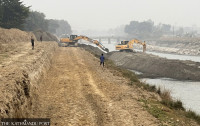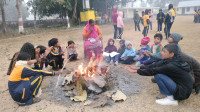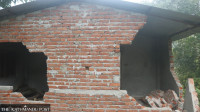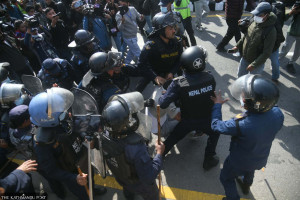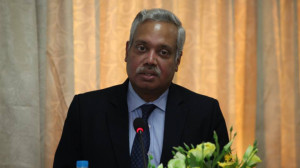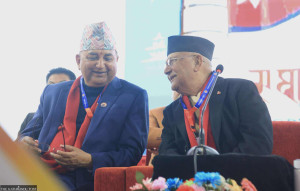National
Locals are first responders during disasters but they are ill-equipped and untrained
At least 33 people have died—18 in the disasters and 15 in lightning incidents—since the start of monsoon this year. Plan to strengthen local governments for disaster response in limbo.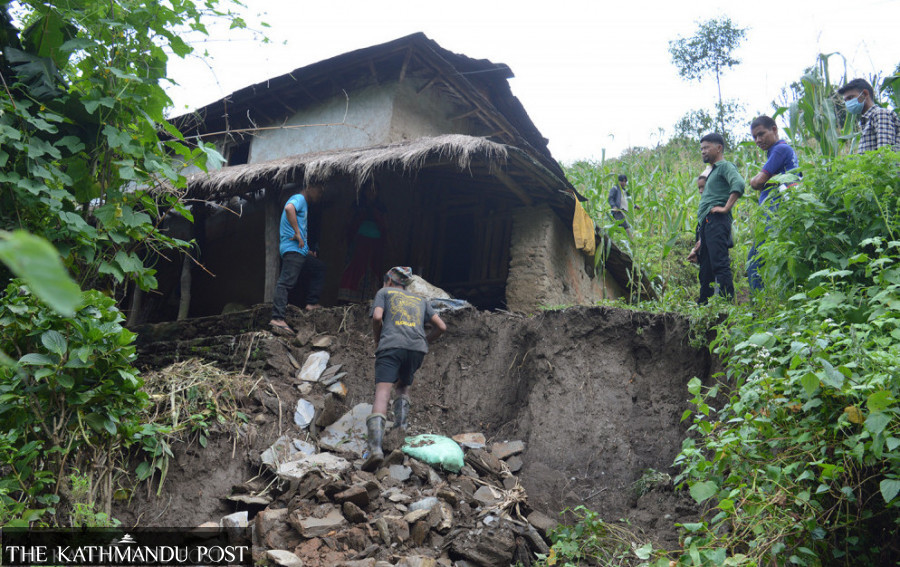
Arjun Poudel
Last Thursday, a 13 year-old girl from Galyang Municipality-10 of Syangja was buried under the weight of her own house. Heavy rainfall that continued for days led to the collapse of her mud house, which also killed some livestock and injured her elder brothers.
She was rushed to the nearby community hospital, which said she was brought dead, according to Mukti Khanal, chair of Ward-10 of the municipality.
Locals rescued other injured members of the family and livestock and took them to a safe place.
Security personnel from Nepal Police and the Armed Police Force reached the incident site only after two hours, according to Khanal.
When disasters strike in far-flung and remote areas, rescuers cannot reach immediately and local residents work as the first responders.
But they lack training and are ill-equipped, leading to loss of lives and property that could be prevented, say experts.
At least 18 people have died and 19 injured in disaster-related incidents since the start of monsoon this year, on June 5. An additional 15 people have died and 18 injured in the incidents of lightning strikes.
Likewise, 85 people were rescued and 2,565 people were shifted to safe places. Fifty-seven houses, three concrete bridges and one suspension bridge have been destroyed and 55 houses have been damaged by floods and landslides, according to the Ministry of Home Affairs.
More disaster related incidents are expected this year, as the peak of the monsoon season is yet to come.
As per the seasonal forecast by the Department of Hydrology and Meteorology, this year, 55 to 60 percent more rainfall is likely in some places of the country compared to last year.
Last year saw hundreds of people killed and thousands displaced in rain-related incidents. According to the Ministry of Home Affairs, between June and late October, 2021, 673 people died, 69 went missing and 181 were injured in water-induced disaster incidents. In October alone, at least 101 people died and several were unaccounted for after an unseasonably heavy rainfall.
Hundreds of private homes, several government buildings, schools, bridges, highways, and hydropower projects suffered heavy damage due to rain-triggered floods and landslides.
Although the government has planned to form the National Volunteers Bureau to mobilise volunteers to respond to disasters-related incidents, and allocated a budget for the same, there has been little progress.
“Yes we could not institute the bureau and train volunteers this year,” said Dijan Bhattarai, spokesperson for the National Disaster Risk Reduction and Management Authority. “We will do it next year.”
Had the authorities concerned implemented the programme, the capacity of the local governments to respond to disaster-related incidents would have been enhanced and they would have been better equipped, experts say.
In Galyang Municipality, local people removed the debris and rescued the victims using whatever means they had.
Formation of the National Volunteers Bureau is in line with the Disaster Risk Reduction and Management Act, 2074, Disaster Reduction and Management National Strategy, 2075 and Disaster Management Regulations, 2076.
Officials concede that most of the local units in the country are ill-equipped, lack resources and training.
Bhattarai said the government does not lack the budget to train volunteers and assist the local units to prepare them to respond in the event of disasters.
Experts say preparations have not been done not because of the lack of policies and guidelines but because of lackadaisical approach of the authorities concerned.
“It is the responsibility of the federal agencies to strengthen local units, equip them with necessary tools and techniques and enhance their skills,” said Shakti Gurung, executive director at the Center for Disaster Management Studies. “Local units too should work proactively to respond to disaster-related incidents.”
For that they can stockpile necessary materials, train volunteers, organise simulations and develop early warning systems.
But the problem is new leadership has just been elected at the local level.
“The new representatives lack knowledge,” said Gurung. “And the erstwhile representatives, who were aware about the necessity of strengthening local units to respond to disaster-related incidents, have gone.”




 15.12°C Kathmandu
15.12°C Kathmandu


